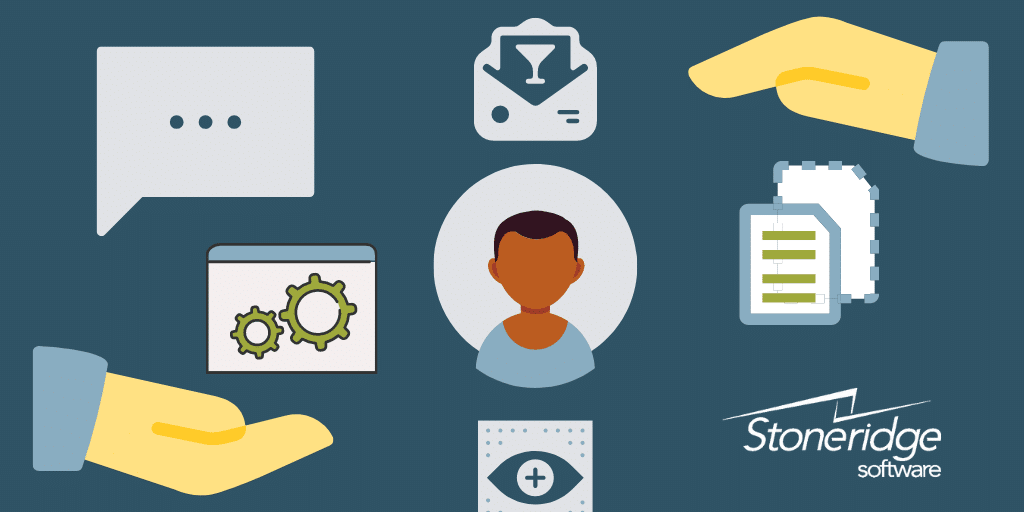Recommendations for a Better Employee Experience During ERP Implementations

I have recently completed my doctoral degree in the area of Organization Development and Change, which explored these facets of change management:
- Mediating and implementing sustainable and successful change at an individual, group, and organization level
- How people react to and perceive those changes
- And the meaning it has for people
The final product of this program was to create and research a topic that incorporated these values. I decided to explore the effects that ERP implementations have on individual employees not only from a logistical standpoint (i.e. your daily tasks will look differently in the new system versus the old system) but more importantly, to understand the implications of the change and its impact on people.
The motivation for this topic stems from an alarming statistic that companies will traditionally see an increase in employee turnover during and shortly after an ERP system implementation; a very vulnerable time for companies to lose key people. My goal was to analyze the research and recommend strategies for providing a better employee experience during ERP implementations in order to reduce turnover.
The questions I set out to explore were:
- What are the experiences of employees working through an ERP implementation?
- Are there factors related to retention and satisfaction that companies should be mindful of during that process?
To gain a better understanding of this process, I identified five people to interview who had gone through an implementation within the past year, thus having the benefit of being able to look back and recall their experiences about the project as an end-user with the experience fresh in mind. These were people that were (not) part of the core project or implementation teams, and that was a conscious decision because the idea is that people on the project teams generally have higher access to information about the project than other non-project employees. These were also people who were employed at small to medium-sized businesses; under 500 employees. The intent of this demographic was the thought that larger companies generally have larger amounts of dedicated resources for these projects, which may not reveal the employee experiences in the same manner as smaller companies.
Each interviewee was asked some basic demographic information about the use of technology in their daily work, the comfort level they felt with technology in general and the length of their ERP implementation. This information is presented below:
After I transcribed the interviews, themes were generated that captured commonalities across each experience, and recommendations were later formed to address each theme. In a set of six blog posts, I’ll review each recommendation made for company leadership, what the employee experiences were that contributed to those themes, and what the implications were for the employees and their job satisfaction.Figure 1 The interviewees' names have been altered to protect their identities.
Recommendation 1 - Recognize that ERP transformations re-design jobs, and proactively maintain or add elements to jobs that are intrinsically motivating.
The first recommendation for company leadership undertaking an ERP implementation project is to understand that ERP implementations will unavoidably re-design employee jobs in some manner and to proactively maintain or add elements to employee jobs that are intrinsically motivating to offset those changes. These recommendations originate from the theme of ‘job enrichment’ which was prevalent across the interviews and encompass the areas of job autonomy, which is the ability of people to think and operate independently in their jobs, and changes to task variety and challenge, which are changes in job attributes resulting from shifts in roles and responsibilities.
Interview comments highlight this theme. Kim described feeling restricted in her ability to perform her job post-go-live due to the tightened controls within the new system, and how her job had now become more transactional. She described this experience:
“My job is more stressful now because I have less visibility into my vendors, and the time that I used to have to be able to build those relationships is pretty much gone… I feel more like an order entry clerk... the job that I used to do is really different than what I do now.”
Many of the relationship-building aspects of her job that she once enjoyed had been reduced which negatively affecting her satisfaction. Sean indicated his job has become more fast-paced, while Chris described how his warehouse staff felt anxious about having to use their ERP system and technology for their daily tasks, which resulted in slowing their performance. Jenny described how many of her company’s employees shared anxieties about not having a clear understanding of their roles and responsibilities during the implementation.
The Importance of Intrinsic Motivation
It is very clear that the majority of interview comments, reactions, and dissatisfactions shared by participants related to aspects of their jobs that changed, which reduced their intrinsic motivation, and thus their engagement and job satisfaction. Intrinsic motivation refers to working or engaging in an activity by desires to do something for its own sake (1); tasks that people find internally rewarding. There is a large body of evidence available (2) that suggests that job dissatisfaction may result from a change in a person’s work activities that diminishes, decreases, or constricts the key variables that contribute to their intrinsic motivation. For example, Kim explained how the implementation project she went through resulted in her having less decision-making authority, less input, discretion, and task variety. As there is evidence (3) suggesting that technological systems such as ERP systems may limit job enrichment opportunities by constraining the number of ways in which jobs can be carried out, her reaction is understandable.
It is unlikely that an employee’s job will remain unchanged throughout an implementation, and it is unlikely that each employee will be able to participate in every choice and decision. Leadership can, however, maintain a dialogue with employees to encourage them to remain open-minded and to communicate with their managers about their work, satisfaction, and how their jobs might change. Doing so may help reduce the amount of anxiety experienced and improve the sense that employees feel valued, supported, and informed.
Vertical Loading as a Job Design Principle
Strategies can be taken, such as vertical loading, to supplement these changes. Vertical loading is a job design methodology that aims to decrease the gap between performing a job and controlling it (3) while enriching employees’ experiences with what they do. A vertically-loaded job has responsibilities and controls that were formerly reserved for management. Vertical loading is arguably the most important principle of job design, and as a result, autonomy is generally increased. This could include combining tasks, putting employees in direct contact with their customers or suppliers to gain feedback and understanding, and giving them more responsibility. Job responsibilities will shift irrespective of leadership’s participation in their redesign; therefore, the recommendation is to engage proactively in this change. This strategy should lead to a greater sense of personal accountability and responsibility for job results.
References used in this research:
(1) Deci, E. L., & Ryan, R. M. (1975). Intrinsic Motivation - Perspectives in Social Psychology. New York: Plenum Press.
(2) Macey, W. H., & Schneider, B. (2008). The Meaning of Employee Engagement. Industrial and Organizational Psychology, 1, 3-30.
(3) Cummings, T. G., & Worley, C. G. (2015). Organization Development & Change (10th ed.). Stamford, Connecticut: Cengage Learning.
Further reading:
https://ir.stthomas.edu/caps_ed_orgdev_docdiss/72/
If you'd like to learn more about my research or how Stoneridge Software works together with clients to successfully implement and transition to a new ERP or CRM solution please reach out!
Under the terms of this license, you are authorized to share and redistribute the content across various mediums, subject to adherence to the specified conditions: you must provide proper attribution to Stoneridge as the original creator in a manner that does not imply their endorsement of your use, the material is to be utilized solely for non-commercial purposes, and alterations, modifications, or derivative works based on the original material are strictly prohibited.
Responsibility rests with the licensee to ensure that their use of the material does not violate any other rights.






